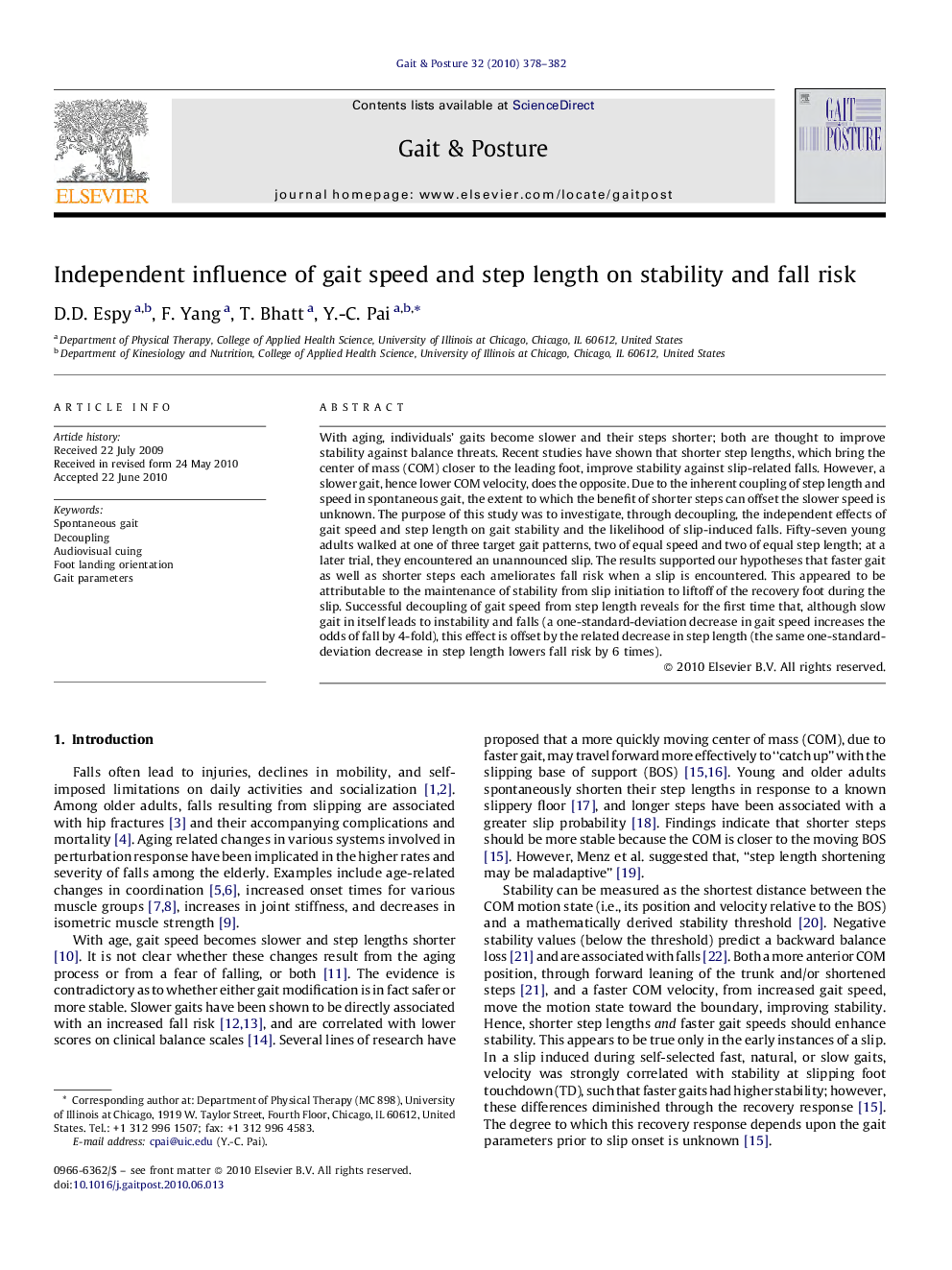| کد مقاله | کد نشریه | سال انتشار | مقاله انگلیسی | نسخه تمام متن |
|---|---|---|---|---|
| 4057173 | 1265687 | 2010 | 5 صفحه PDF | دانلود رایگان |

With aging, individuals’ gaits become slower and their steps shorter; both are thought to improve stability against balance threats. Recent studies have shown that shorter step lengths, which bring the center of mass (COM) closer to the leading foot, improve stability against slip-related falls. However, a slower gait, hence lower COM velocity, does the opposite. Due to the inherent coupling of step length and speed in spontaneous gait, the extent to which the benefit of shorter steps can offset the slower speed is unknown. The purpose of this study was to investigate, through decoupling, the independent effects of gait speed and step length on gait stability and the likelihood of slip-induced falls. Fifty-seven young adults walked at one of three target gait patterns, two of equal speed and two of equal step length; at a later trial, they encountered an unannounced slip. The results supported our hypotheses that faster gait as well as shorter steps each ameliorates fall risk when a slip is encountered. This appeared to be attributable to the maintenance of stability from slip initiation to liftoff of the recovery foot during the slip. Successful decoupling of gait speed from step length reveals for the first time that, although slow gait in itself leads to instability and falls (a one-standard-deviation decrease in gait speed increases the odds of fall by 4-fold), this effect is offset by the related decrease in step length (the same one-standard-deviation decrease in step length lowers fall risk by 6 times).
Journal: Gait & Posture - Volume 32, Issue 3, July 2010, Pages 378–382